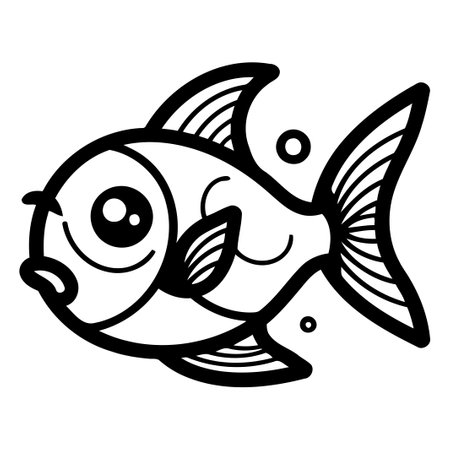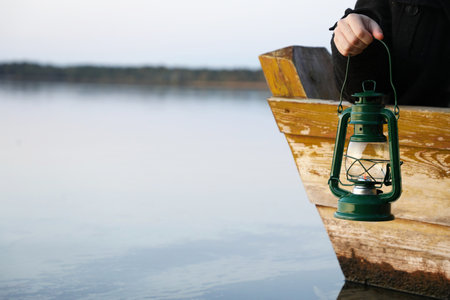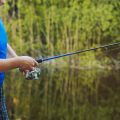1. Misreading the Tide
If you ask any seasoned UK bass angler about their top secret to success, they’ll likely mention “tides” before anything else. Still, many newcomers – and even some old hands – make the classic mistake of underestimating just how much tidal movement can affect bass fishing along Britain’s coast. Tides aren’t just background noise; they dictate when and where bass will be feeding. If you rock up at the wrong stage of the tide, you might as well be throwing lures into a puddle!
It’s not just about knowing when high or low water hits your mark, but also understanding how fast the tide runs, how it pushes baitfish into certain gullies or sandbanks, and how these patterns change with each new moon and spring tide. For example, many UK marks fish best on the flood (incoming) tide, but some hotspots only come alive on the ebb.
The best way to avoid wasted sessions is to get local knowledge – chat with regulars at your tackle shop, join a few online forums, or even better, keep your own notes after each trip. Pair this info with a decent UK tide app or a paper tide table (old school but gold!) and always plan your session around those key tidal windows. Remember: it’s not just about being there when the tide is right, but also about learning what “right” looks like for your favourite stretch of coast.
2. Incorrect Bait and Lure Choices
One of the most common slip-ups I see among both new and experienced anglers is using the wrong bait or lure for the local conditions. Let’s be honest, not all lures and baits work everywhere across the UK’s coastline. British bass can be picky, and what works wonders on a Cornish reef might do nothing on a Kentish shingle. Picking the right gear is all about knowing your mark, the season, and a bit of classic British know-how.
Classic British Bass Baits
If you’re just starting out, or even if you’ve been at it for years, it’s always worth going back to basics. Here are some tried-and-tested baits that have landed countless UK bass over the years:
| Bait/Lure | Best Used When | Typical Locations |
|---|---|---|
| Lugworm/Ragworm | After storms or in coloured water | Muddy estuaries, beaches |
| Peeler Crab | Spring and early summer runs | Rocky marks, piers |
| Sandeel (fresh or artificial) | Clear water, bright days | Surf beaches, sandbanks |
| Soft Plastic Lures (shads, paddle tails) | Dusk and dawn, low light | Reefs, mixed ground |
| Surface Lures (walk-the-dog style) | Calm conditions, summer mornings/evenings | Rocky outcrops, harbours |
How to Pick the Right Bait for Your Mark
The real secret is matching your bait or lure to the food source available where you’re fishing. Spend a few minutes turning over rocks or scanning the shallows – are there sandeels darting about? Can you spot crabs under stones? If so, you’ve got a good clue as to what local bass are after.
Tips for Avoiding Common Mistakes:
- Ask Locals: Don’t be shy – chat to other anglers or staff in tackle shops. They’ll often point you in the right direction.
- Avoid Generic Kits: Those “all-in-one” lure packs might look tempting but rarely suit specific UK marks.
- Mix It Up: Always bring a range of baits/lures so you can adapt if something isn’t working.
- Observe & Adapt: If you’re not getting bites within an hour, switch things up based on what’s around you.
A Final Word from the Water’s Edge…
I’ve lost count of how many times changing from a bright flashy lure to something more natural turned my session around. Remember: UK bass fishing isn’t about forcing your favourite lure to work; it’s about reading your spot and matching what nature’s already serving up.

3. Overlooking Local Conditions
If there’s one thing British bass anglers quickly learn, it’s that ignoring local conditions is a sure-fire way to blank. The UK’s coastline is wonderfully varied, and each venue—from rugged Cornish coves to sweeping Sussex shingle—brings its own set of challenges. Weather plays a massive part; for instance, a sudden drop in temperature or a switch in wind direction can completely change bass behaviour overnight. Equally, water clarity is key—bass are opportunistic, but they’re not daft. Murky water after heavy rain might call for lures with more vibration or scent, while crystal-clear days often require finesse and natural presentations. Don’t forget those shoreline features either: rocky outcrops, sandbanks, and gullies all influence how bass hunt their prey. So before you cast out, take a moment to observe the conditions. Ask the locals, watch the tide charts, and pay attention to what the birds are doing—they’re often the first to spot baitfish activity. By tuning in to the nuances of your chosen mark, you’ll give yourself a real edge and avoid one of the most common pitfalls UK bass fishers face.
4. Fishing the Wrong Marks
One of the most common mistakes among UK bass anglers is sticking to well-known, crowded marks simply because they’re popular. It’s easy to fall into the habit of fishing the same spots as everyone else, but doing so without considering when and why bass are present often leads to disappointing sessions. The key to consistent success is understanding that not all marks produce at all times – factors like tide, weather, time of year, and baitfish movements play a massive role in whether bass will actually be around.
Why Popular Doesn’t Always Mean Productive
Just because a mark appears in every forum post or gets mentioned down the tackle shop doesn’t mean it’s always holding fish. Bass are highly mobile and react quickly to changes in their environment. If you’re only hitting up the obvious hotspots, you might be missing out on quieter areas that could be far more productive at certain times.
How to Find Productive UK Bass Spots
It pays to combine research with good old-fashioned observation. Here’s a simple comparison between relying solely on reputation versus putting in your own groundwork:
| Approach | Pros | Cons |
|---|---|---|
| Fishing Popular Marks | Easy access, proven catches in the past | Crowded, pressured fish, inconsistent results |
| Personal Research & Observation | Less competition, potential for untapped action, tailored to conditions | Takes time and effort, learning curve involved |
Top Tips for Spotting Productive Marks:
- Tide Watching: Note how water movement changes at different stages – bass often hunt where currents funnel bait.
- Baitfish Presence: Scan for signs of whitebait, sandeels or sprats near shorelines or estuary mouths.
- Bird Activity: Gulls and terns diving can signal feeding bass beneath.
- Tackle Shop Chat: Ask about less-talked-about areas rather than just the obvious ones.
- Keep Records: Jot down what works and when – patterns will emerge over time!
The bottom line? Don’t just follow the crowds. Mix research with your own observations and you’ll soon find yourself fishing smarter, not harder – and hopefully landing more of those cracking UK bass!
5. Poor Casting and Retrieval Techniques
If you’ve ever spent a blustery morning on the Cornish coast or cast your line along a Sussex estuary, you’ll know that technique truly matters in UK bass fishing. One of the most common mistakes I see—whether from newcomers or even seasoned anglers—is underestimating how much casting distance and retrieval style influence your catch rate.
Common Casting Mistakes
- Short casts: Many anglers don’t put enough power behind their cast, leaving their lure well short of where the bass are feeding. In clear, shallow waters, those extra few yards can make all the difference.
- Poor accuracy: Haphazardly chucking your lure out won’t do. Bass often hug structure—think rocky outcrops, weed beds, or sandbanks—so accurate placement is key.
Retrieval Blunders
- Monotonous speed: Reeling at one pace is a rookie error. UK bass can be picky; sometimes they want a slow crawl, other times a quick darting retrieve mimics fleeing baitfish.
- Lack of variation: Failing to mix up pauses, jerks, and speed changes can make your lure look unnatural—or worse, unappealing.
How to Improve Your Technique
- Practice makes perfect: Head down to your local park or quiet stretch of beach and practice casting for distance and accuracy. Try aiming for specific targets like floating debris or marker buoys.
- Match the conditions: On windy days, use heavier lures to cut through gusts. In calm water, lighter lures allow for subtle presentations.
- Vary your retrieve: Try counting down before starting your retrieve so your lure sinks into the strike zone. Mix in fast bursts, pauses, and twitches to entice more strikes.
Bite-Sized Tip
If you’re struggling to reach the fish or get them interested, watch how local anglers work their lures—there’s always something new to learn from those who fish these waters day in and day out. Remember: in UK bass fishing, it’s often not just what you use but how you use it that counts!
6. Neglecting Local Regulations and Conservation
If you’re keen on bass fishing in the UK, it’s absolutely crucial to stay up to date with local regulations—trust me, a bit of homework goes a long way! The UK has some pretty strict rules when it comes to bass angling, all aimed at keeping our fish stocks healthy for future generations. Here’s what you need to know before you hit the water:
Essential Size and Bag Limits
One common mistake is not knowing the legal size and bag limits. Currently, anglers are allowed to keep only a set number of bass per day (often two, but check the latest updates), and each fish must meet a minimum size requirement—usually around 42cm, measured from the tip of the snout to the end of the tail. Keeping undersized fish or taking more than your daily allowance can land you in hot water with local authorities, so always carry a tape measure and double-check your catch.
Closed Seasons
Another pitfall is fishing during closed seasons. There are specific periods—typically from February through March—when keeping bass is strictly prohibited to allow stocks time to spawn and recover. Even if you see others casting lines, remember that these closures are there for good reason. Respecting them means more successful sessions for everyone down the line.
Responsible Angling Practices
Beyond just obeying the law, it’s about looking after our waters and wildlife. Use barbless hooks whenever possible for easier catch-and-release, handle bass gently if you’re returning them, and avoid littering or damaging habitats. If you spot illegal activity or pollution, report it—every little helps.
Why It Matters
It might feel like a faff at times, but following these rules keeps our bass population thriving—and ensures we can all enjoy cracking sport for years to come. Plus, you’ll avoid hefty fines and do your bit as a responsible UK angler. So before you head out next time, brush up on local byelaws—it’s well worth it!


